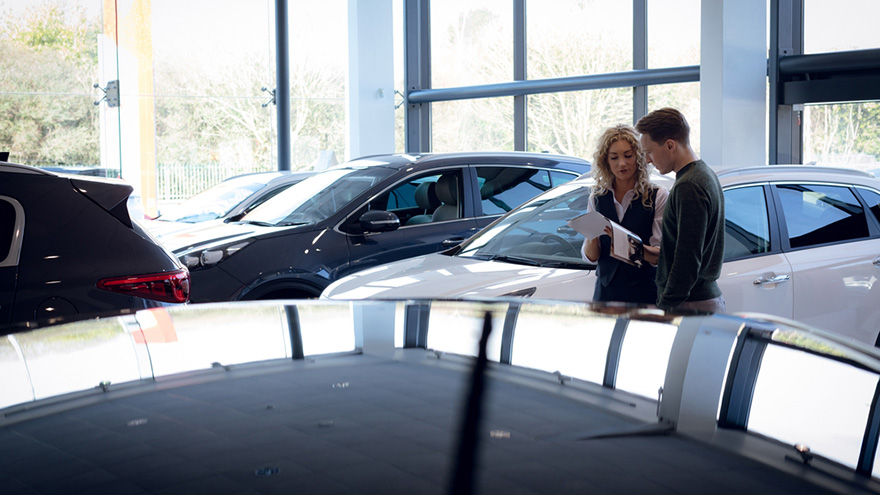CPO sales soar; price gap between late-model and new widens

By subscribing, you agree to receive communications from Auto Remarketing and our partners in accordance with our Privacy Policy. We may share your information with select partners and sponsors who may contact you about their products and services. You may unsubscribe at any time.
CARY, N.C. –
The certified pre-owned vehicle market reached a major milestone in the second quarter and “moved past the 700,000 threshold for the first time,” according to a report released Tuesday by Edmunds.
Specifically, there were 711,270 CPO vehicle sales during the quarter, beating year-ago figures by 2.5 percent, Edmunds said in its latest Used Car Report.
Separately, the latest analysis from KAR Auction Services chief economist Tom Kontos, citing Autodata Corp., indicates there was a 7.5-percent sequential decrease and a 1.9-percent year-over-year drop in certified sales during July (given the fewer selling days), but that through seven months of the year, CPO sales have climbed 2.8 percent.
Overall, there were 10.42 million used cars sold in Q2, compared to 10.17 million used sales a year ago, Edmunds said.
In an Industry Update released last week, Cox Automotive said there was approximately a 3-percent year-over-year lift in used-car sales for July; that's despite last month having one less selling day. The annualized used-car sales pace has climbed to 39.5 million, which is up 1 percent year-over-year and a “new peak for this expansion period,” Cox Automotive analysts said.
‘Trend that will hold for years’
Going back to the Edmunds report, franchised dealers moved 3.03 million used vehicles in the second quarter, up from 2.95 million in Q2 2017.
Subscribe to Auto Remarketing to stay informed and stay ahead.
By subscribing, you agree to receive communications from Auto Remarketing and our partners in accordance with our Privacy Policy. We may share your information with select partners and sponsors who may contact you about their products and services. You may unsubscribe at any time.
And 25.5 percent of those franchised dealer used-car sales were 3-year-old vehicles. Comparatively, the share was at 22.3 percent a year ago. And the crop of those 3-year-old rides was at an all-time high in Q2 2018.
“Taking into consideration that new-car lease penetration rates have held at nearly 30 percent through 2018, off-lease vehicles will now effectively constitute the majority of franchise used sales until at least 2021,” Edmunds said in the report.
Residuals flat
The strong supply of 3-year-old vehicles has led to “flattening” residuals on these cars, Edmunds said.
Even as overall transaction prices reached a 13-year high ($20,153).
For instance, the average 3-year-old vehicle sold for $13,339 less than a new car last quarter. In the same period of 2013, the gap was only $10,632, the analysis indicates.
“The gap between new and used vehicle prices is significantly widening,” said Ivan Drury, Edmunds’ senior manager of industry analysis, in a news release.
“Near-new vehicles offer greater savings now than they ever have before, thanks to a constant supply of off-lease vehicles and a shortage of older vehicles in the market,” he said.
Offering even more context, Edmunds noted in its report: “The used market is contending with two extremes: the constant supply of off-lease vehicles and a shortage of older vehicles. Comparing Q2 2018 to Q2 2013, we see that residual values are flattening and creating less of a discrepancy between model years, underscoring how buying a near-new vehicle presents a greater value now more than ever before.”
By segment, the largest percentage gap between 3-year-old and new prices is within the luxury midsize segment (48 percent). Next are sports cars (45 percent) and large cars (43 percent).
The narrowest difference is in midsize trucks, where new models are just 27 percent more expensive than 3-year-old editions. Luxury large cars (30 percent difference) and large trucks (33 percent) followed.
“Luxury midsize cars serve as an example of the used market providing significant savings since these vehicles often have the highest lease penetration rate of any vehicle category,” said Drury.
“On the other end of the spectrum, midsize trucks is a category that has been invigorated on the new sales front with the resurrection of old models, but leasing has never been popular among these shoppers,” he said. “And with such limited quantities on the used market, midsize trucks retain high values, making them less appealing from a savings perspective.”
Among the 20 top sellers on the used-car side, the BMW 3 Series had the biggest price gap between new and 3-year-old editions (48 percent). It was followed by the Chevrolet Malibu (46 percent) and Chevrolet Cruze (45 percent).
The comparisons were closest for the Toyota RAV4 (29 percent), Honda CR-V (30 percent) and Toyota Corolla (32 percent), respectively.
“BMW’s 3 Series faces weakened residual values because of high lease volumes in a segment that is no longer seen as the entry point into the luxury market, but those who regard the 3 Series as the luxury compact sedan to own can benefit from significant savings,” said Drury.
“On the other end, the Toyota RAV4 was a best-seller when new, and even though it was heavily leased three years ago, the strong residual values of this vehicle combined with the healthy overall demand in the compact SUV segment don’t allow for significant savings.”
Impact of tariffs
Be prepared for change, though, should tariffs have an impact. Drury adds: “If tariffs are enacted against specific models, these savings figures are bound to change and are certain to test customer loyalty.”
The report further notes: “If tariffs are imposed, would-be new-car buyers could shift their purchases toward used vehicles. Depending on the scope and severity of the tariffs, there could be a massive influx of consumers who begin to eye a near-new vehicle over a tariff-imposed competitor.”


